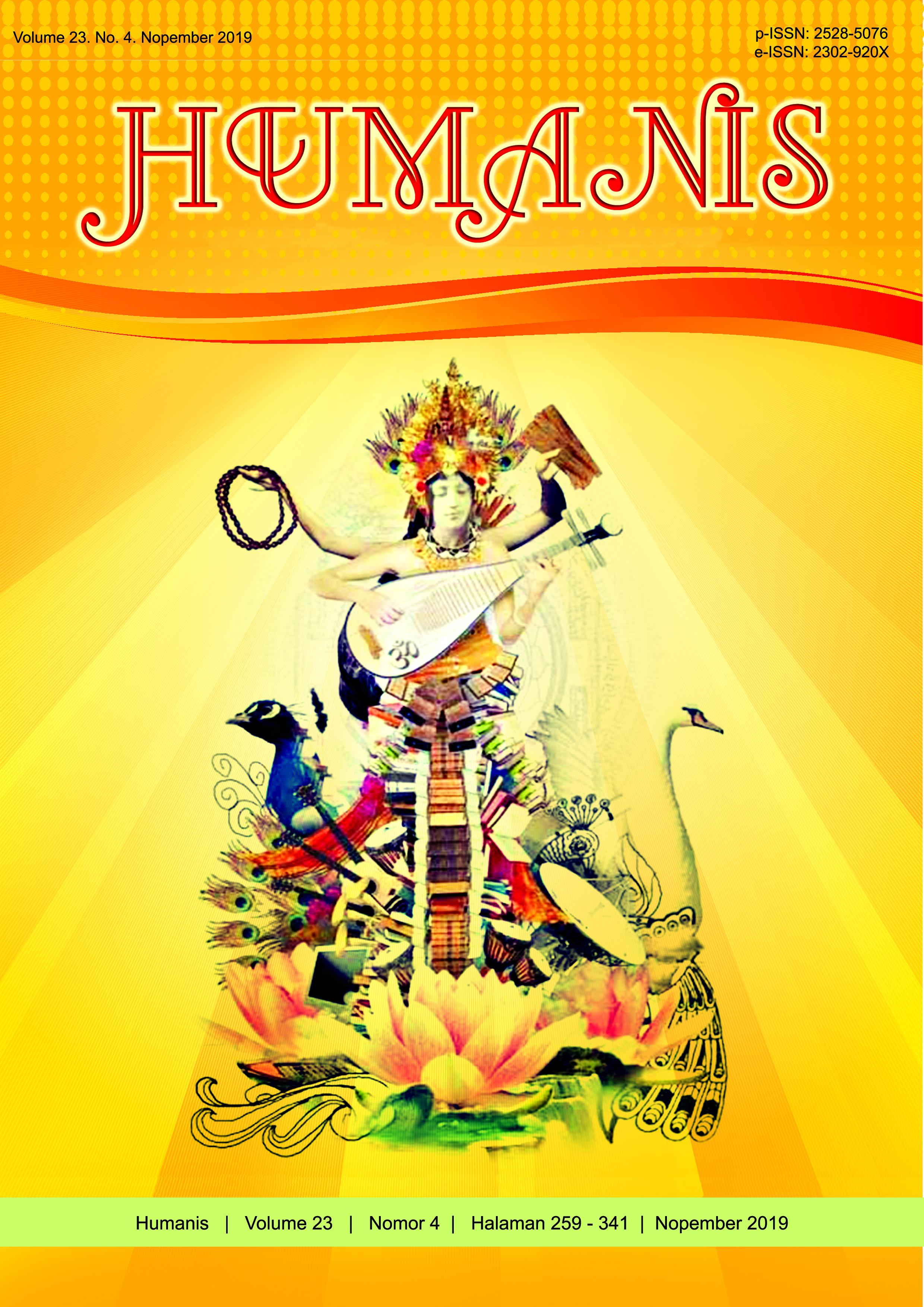Pementasan Tari Jejumputan dalam Upacara Saba Nguja Benih
Abstract
Pedawa Village is one of Bali Aga Villages located in Banjar sub-district, Buleleng district which has a sacred ritual dance, name of this sacred dance is tari Jejumputan. This dance is usually performed once every five years when performing (sasih kaulu nemoning purnama) the ritual of Saba Nguja Benih. There are problems of study in this research, namely (a) How are the procredures of tari Jejumputan in the ritual of Saba Nguja Benih in Pedawa Village (b) Function of the performance of tari jejumputan in the ritual of Saba Nguja Benih. This research is purposed to describe the performance of tari jejumputan in the event of the ritual of Saba Nguja Benih, and to unveil the function of the performance of tari Jejumputan in the ritual of Saba Nguja Benih in Pedawa Village. The theories used in this research are the theory of manifest and latent proposed by Robert K Merton. Method used in this research is the qualitative research method. The techniques of collecting the data are observation, interview, and literature study. The technique of analysis used in this study is descriptive qualitative analysis. There are manifest and latent function in Jejumputan dance at Saba Nguja Benih ceremony. The manifest function contain important function namely to entertain Dewi Sri to get good seed, good harvest, deny the pest, and as a blessing for the bliss in agricultural sector. The latent function of Jejumputan dance is strength the solidarity among the society and as the identity of Pedawa Village.
Downloads
References
Ariani, Ni Luh Ayu Sekar.2018. “Tari Rejang Pusung Di Desa Pekraman Geriana Kauh Kecamatan Selat, Kabupaten Karangasem”. Denpasar. Jurnal Kalawang Volume 4 No. 2: 112-121.
Faradhista, Ira Dhirma. 2014. “Bentuk Tari Landok Alun Pada Masyarakat Suku Alas Kabupaten Aceh Tenggara”. Medan. Jurnal Gestur Volume 3 No. 1: 2-13.
Iryanti, V Eny.2000. “Tari Bali : Sebuah Telaah Historis”. Surabaya. Jurnal Pengetahuan dan Pemikiran Seni Volume 1 No 2: 75-90
Kaplan, David. 2000. “Teori Budaya” Yogyakarta: Pustaka Pelajar.
Kartiani, Ni Luh Desmi.2018. “Bentuk Dan Fungsi Tari Baris Buntal, Desa Pekraman Pongotan, Kabupaten Bangli”. Denpasar: Jurnal Kalangwan Volume 4 No. 1: 32-41.
Koentjaraningrat.1980.”Beberapa Pokok Antropologi Sosial”. Jakarta: PT Dian Rakyat.
Lodra, I Nyoman. 2017. ”Tari Sanghyang;Media Komunikasi spiritual Manusia dengan Roh”. Jurnal Multikultural dan Multireligius Volume 16 No.2: 241-252.
Purna, I Made. 2017. “Tari Sanghyang di Banjar Jangu, Desa Duda, Kecamatan Selat, Kabupaten Karangasem, Bali”. Denpasar. Jurnal Mudra Volume 32 No. 2: 238-353.
Putra, I Gusti Agung Gd.1980 .Cudamani Tari Wali, Denpasar: Perc Bali.
Sadguna,dkk. 2015.”Genggong dalam karawitan bali: sebuah kajian etnomusikologi”. Denapasar. Jurnal Segara Widya Volume 3 No. 1: 368-378.
Spradley, Jemes P. 2006. Metode Penelitian Etnografi. Yogyakarta: Tiara Wacana.
Sutiyono, Suyitno.2018. “Pemulihan Tanaman Padi Melalui Pertunjukan Wayang Kulit Dalam Upacara Bersih Desa Di Geneng, Trucuk, Klaten, Jawa Tengah”.Yogyakarta: Jurnal Mudra Volume 33 No. 2: 263-269.
Wahyuni, lilik.2019. “Kontruksi Agriliteracy Melalui Dongeng Dewi Sri”.Malang: Jurnal Belajar Bahasa Volume 4 No.2: 93-104.
Yasa, I Ketut .2018. “ Angsel-Angsel dalam Gong Kebyar”. Surakarta. Jurnal Mudra Volume 33 No.1: 85-92.


















